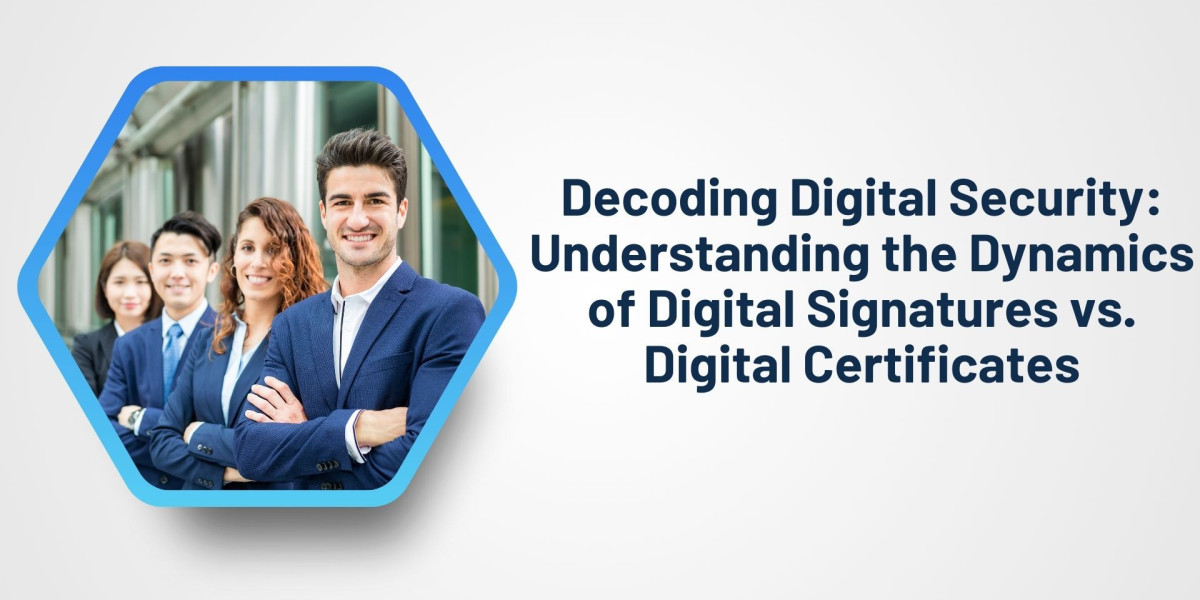In the realm of digital security, where every bit and byte can hold invaluable information, the concepts of digital signatures and digital certificates stand as the formidable guardians of integrity, authenticity, and confidentiality. These twin pillars form the cornerstone of modern cryptographic protocols, providing the trust and assurance necessary for secure communication and transactions in the digital age.
Unraveling the Foundations
At the heart of digital security lie two distinct yet interrelated components: digital signatures and digital certificates. To comprehend their significance, one must delve into their fundamental definitions and functionalities.
Digital Signature:
A digital signature is akin to its handwritten counterpart, yet it operates within the digital domain. It serves as a cryptographic mechanism that binds a piece of electronic data to a particular entity, affirming its authenticity and ensuring its integrity. Utilizing asymmetric encryption techniques, digital signatures are generated using the sender's private key and can be verified using the corresponding public key.
Digital Certificate:
On the other hand, a digital certificate acts as a digital identity card, attesting to the authenticity of an entity in the online realm. It contains information such as the entity's identity, public key, issuing authority, and expiration date, all cryptographically signed by a trusted third party known as a Certificate Authority (CA). Digital certificates play a pivotal role in establishing trust in online interactions by enabling parties to verify each other's identities and exchange encrypted information securely.
The Dynamics of Security
While both digital signatures and digital certificates contribute to the overarching goal of securing digital communications, they serve distinct purposes within the cryptographic ecosystem.
Authentication:
Digital signatures serve as a means of authenticating the origin and integrity of digital messages or documents. By affixing a digital signature to a piece of data, the sender cryptographically binds their identity to the content, thereby establishing accountability and trust. Recipients can verify the signature using the sender's public key, ensuring that the data remains unaltered and originated from the purported sender.
Identity Verification:
Digital certificates, on the other hand, facilitate identity verification in online interactions. By presenting a digital certificate issued by a trusted CA, entities can prove their identity to other parties in a secure and verifiable manner. This process enables secure communication channels to be established, safeguarding against impersonation and man-in-the-middle attacks.
Key Management:
Both digital signatures and digital certificates rely on asymmetric encryption techniques, necessitating robust key management practices. Entities must safeguard their private keys to prevent unauthorized access and misuse, as compromising the private key could undermine the security guarantees provided by digital signatures. Similarly, CAs must adhere to stringent security protocols to protect their certificate signing keys, as any breach could lead to the issuance of fraudulent certificates, compromising the integrity of the entire trust infrastructure.
Building Blocks of Trust
The synergy between digital signatures and digital certificates forms the bedrock of trust in the digital realm. Through their combined capabilities, they enable secure and tamper-evident communication, instilling confidence in online transactions and interactions. Whether it's validating the authenticity of a digitally signed contract or securely exchanging sensitive information over the internet, the symbiotic relationship between these two cryptographic constructs ensures the preservation of confidentiality, integrity, and authenticity in the digital domain.
Applications in Practice:
The significance of digital signatures and digital certificates extends across various domains, including:
Electronic Transactions:
Digital signatures facilitate the signing of electronic documents, contracts, and transactions, eliminating the need for paper-based processes and streamlining workflows.
Secure Communications:
Digital certificates enable secure communication channels, such as SSL/TLS encrypted connections, safeguarding against eavesdropping and data tampering in online interactions.
Authentication and Access Control:
Digital certificates are utilized in authentication protocols such as SSL client authentication and digital signatures, enabling secure access to online resources and services.
Code Signing:
Digital signatures are employed in code signing certificates to verify the authenticity and integrity of software applications, ensuring they haven't been tampered with or compromised by malicious actors.
Suggested Read: Digital Signature Certificate for E-Tenders
Conclusion: Fortifying the Digital Frontier
In the ever-expanding digital landscape, where data breaches and cyber threats loom large, the role of digital signatures and digital certificates in fortifying the digital frontier cannot be overstated. By providing mechanisms for authentication, identity verification, and secure communication, these cryptographic constructs serve as the linchpins of trust, enabling individuals, organizations, and systems to navigate the complexities of the digital realm with confidence and certainty. As technology evolves and threats proliferate, the continued advancement and adoption of robust cryptographic solutions will be essential in preserving the integrity and security of our increasingly interconnected world.



